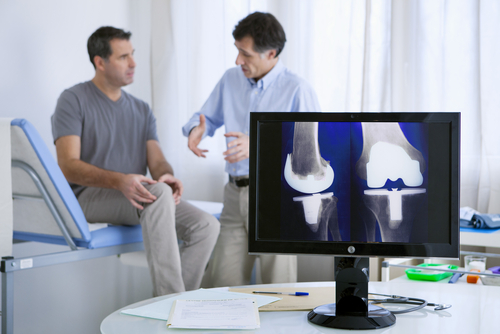The orthobiologics field has witnessed an unprecedented flurry of advancements over the last few years and appears to be well-positioned for an upcoming reconstruction over the time. However, the boom of orthobiologics remains abated, on account of lack of high-level evident studies and most of the field being under-researched. With merely four generations of orthobiologic therapies been acknowledged to date, persistent efforts to introduce new range of efficient products are likely to open up new avenues for the wide-spread adoption of orthobiologics.
The landscape of orthobiologics market continues to be influenced by increasing clamor for products delivering effective and versatile results amid various clinical indications. With innovations paving grounds for stellar opportunities, the orthobiologics market is likely to reflect a business potential worth nearly US$ 6.5 Bn by 2027-end. The adoption rate of orthobiologic products is also likely to be impacted by an unwavering demand for products that stimulate instant healing and eliminate the necessity of frequent hospital visits. An alarming need of creating a robust framework to treat musculoskeletal injuries using optimal procedures is pushing the demand for orthobiologic products. Moreover, the expansion of orthobiologics is foreseen to be highly promising, on the back of demand from soft tissue replacement and regeneration procedures.
Shift toward a sedentary lifestyle is fuelling the demand for orthobiologic solutions such as viscosupplementation, meniscal repair and replacement, and so on, creating promising opportunities for the manufacturers to thrive on. A continuum of pricing has been identified as one of the overarching trends in the orthobiologics market, which is an essential factor for end-users to opt for a product within their budget range that meets the desired specifications. Also, end users gravitating toward orthobiomaterials has been identified as a prominent trend, representing lucrative opportunities for the aspiring players vying to make it big in the market. The flourishing field of medical tourism is also creating stellar opportunities for the stakeholders of orthobiologics market to thrive on, with surging demand for out-patient surgical procedures. Rising preferences for minimally invasive procedures, such as growth factor therapies and bone grafting treatments, is presumed to have a positive impact on the adoption rate of orthobiologics.
High cost of treatments involved and impending governmental approvals are two of the key factors thwarting wide-spread proliferation of orthobiologic products. Moreover, lack of transparent reimbursement policies is inducing a wave of skepticism, having an adverse impact on the adoption rate of orthobiologics. Varying levels of evidence and associated timelines necessary for different product indications evolves a longstanding challenge for the manufacturers to introduce new products in the market. Lack of cost differentiation and clinical evidence are two of the preeminent factors limiting the growth of orthobiologics market.
North America is likely to offer profit-making prospects for orthobiologics market, backed by proactive healthcare investments along with research and development initiatives. The North America orthobiologics market is anticipated to approach a value over US$ 3 Bn by 2027-end and on-going healthcare advancements are further likely to empower this market over the time. Additionally, Asia Pacific also represents an attractive market for the key stakeholders of orthobiologics market to attain substantial profits. Bone graft substitutes are one of the highly sought orthobiologic product types, on the back of its wide-spread use across multiple applications such as oncologic surgery, revision prosthetic surgery, spine surgery, and traumatology. Among all the end users, the adoption of orthobiologic products across orthopedic clinics is foreseen to multiply at a fast-paced rate and is likely to exhibit a CAGR of over 3.5 % from 2017 to 2027.
Companies offering orthobiologic products are vying to scale up their business values by offering new products. Key players in the orthobiologics market are launching a wide range of titanium-based platforms for use in spine surgeries. Moreover, business expansions, mergers, and acquisitions are playing a vital role in reinvigorating the business potential of these companies. Successful collaborations with companies offering orthopedic therapies are helping the manufacturers to revamp their product portfolios.
Rising number of industry-institution collaborations are also likely to complement the penetration of a widerange of pipeline products, widening the base for the wide-spread expansion of the orthobiologics market. Aspiring players in the orthobiologics market are also striving to introduce efficient bone healing fixes, embodying a combination of osteoinductive, osteoconductive, and osteogenic components. Various disruptive technologies with advanced properties are being thoroughly investigated, in a bid to serve the specifications of patients as well as surgeons.
In case of any new technology, it takes a cohort of pioneers to forge the way. Similar is in the case of orthobiologics, in which scientists and clinicians hailing from various fields making collaborative efforts to offer evidence-based medicine and cutting-edge advancements. For instance, the ‘Orthobiologic Institute (TOBI): Platelet Rich Plasma and Regenerate Medicine Symposium’ is an annual event in which clinicians and healthcare personnel from around the world are invited to discuss researches and advances in orthobiologics on a single platform. Initiatives as such are instrumental to acknowledge viable treatment protocols, which will potentially drive the growth trajectory of orthobiologics market.
The market potential continues to oscillate between a stringent regulatory landscape and favorable research studies. The regulatory framework of orthobiologic products across the globe is variable and is country specific. Although many countries operate in similar terms with regard to regulations, a wave of heterogeneity still exists across different geographies. Getting the green light for the orthobiologic products is a big deal, as unsafe therapies and associated practices carry the potential to damage momentum of the overall market. Contrarily, a recent guidance from FDA related to ‘Human Cellular Tissue and Products’ foresees a shift toward alternative synthetic technologies in the near term, diversifying the growth of orthobiologics market.

